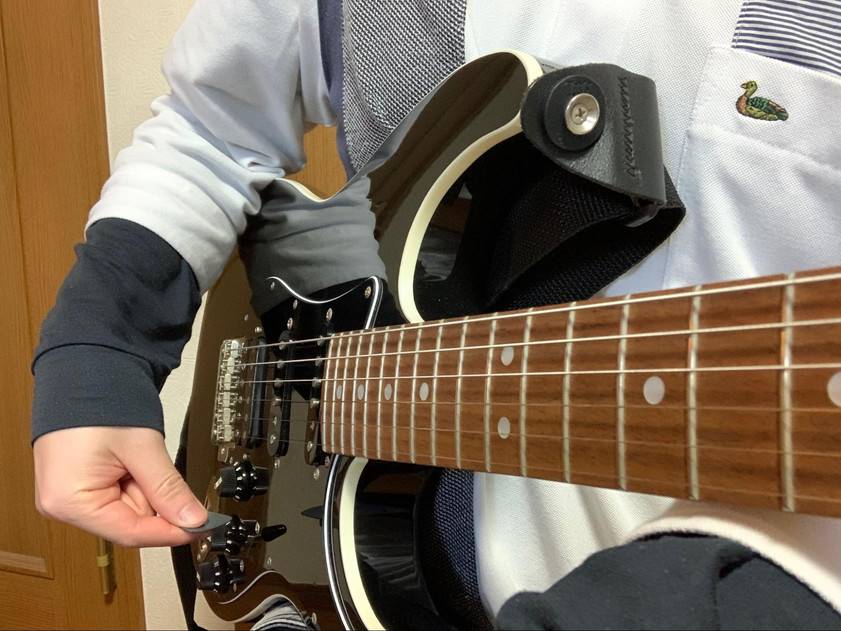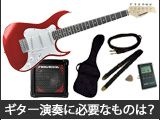Hello. It’s Conservario here.
I admire a sharp strum, don't you?
Strumming is one of those techniques that sounds cool on its own, but it doesn't get in the way of other instruments.
I think many of you most likely have tried it just by watching and imitating.
However, many of you may have experienced that your own strumming is somewhat lacking in sharpness. ......
There are several reasons for this.
It may not be possible for everyone to play effortlessly sharply right away! It may not be easy, but if you keep practicing with proper form, you will be able to do it.
If you are interested in strumming, please read to the end.
■ Point 1: Play quickly. Especially when up picking!
First, let me explain the most important thing.
The secret to playing cutting crisply is ultimately this.
Try playing all six strings while down picking, whether you hold down the chord or not, or even mute it.
Try to make it sound like a single crisp “cha” when you do so.
You have to play very fast to make it sound like one note when you are actually picking all six strings.
Most people pick so slowly that it sounds like jingling.
This means that no matter how cool a rhythm or chord you play, you will never be able to play a sharp strum.
Play it so that you can get the sound of a clap sound in a split second!
Be especially careful with up picking.
Even if you can play a sharp down note in an instant, it will be meaningless if the up note is too slow.
If you are alternating between down and up picking, you will end up playing “cha-jara-cha-jara”, which is totally different from the rhythm of strumming.
Play down and up alternately, and aim to play both with a crisp and clear sound.
■ Point 2: Do not change playing quickly even if the tempo changes!
This is a continuation of Point 1), but the speed of picking does not change even if the tempo changes.
The key to strumming is not to change the way you play, such as playing faster when the tempo of a song is somewhat fast and slower when the tempo is slow.
If the tempo of the song slows down, you can still strum quickly, but instead you will only have longer rests before you play the next note.
If you don't know this, you will become a guitarist who can't strum or change his groove depending on the tempo.
When practicing strumming, always be aware that whether the tempo is 200 or 40 bpm, you must play faster and faster!

■ Point 3: The trajectory of the pick should be directly down when playing downward and directly up when playing upward!
Many people are not able to do this as well as playing fast.
But, this is unavoidable.
The human elbow joint can only bend in one direction (if you can bend in any direction, go to the hospital immediately!) The trajectory of your picking will be in line with the movement of your elbow.
If you are a right-handed guitarist, when you play down, your arm goes downward toward your right side, and when you play up, you head up toward the left side. This is usually the trajectory.
If you try this movement, you will notice that the angle between the pick and the string will vary greatly depending on the string.
The 6th string hits relatively flat, but the pick hits the 1st string almost vertically.
With this application, the sound on the 5th string side of the 6th string is loud and it gives a heavy impression.
The high strings of the first and second strings are almost inaudible, so even if you play fast, you will not get a sharp strumming sound.
So what should you do?
Play the strings directly downward on the down strum and come back up on the up strum.
This way, the angle between the pick and the string is the same for both the bass and treble strings, so the sound that comes out will be beautiful.
Since there is no strange difference in volume between the down and up strings, you can hear the rhythm well.
At first, it may feel strange and unfamiliar, but when strumming, please be aware of the trajectory of the pick, which is straight down and straight up.
■ Summary
I have shown you how to properly strum and how to improve the sharpness of your strumming.
I myself was an apprentice of a famous teacher who was known for his strumming, so I practiced quite a bit.
Now I talk about it in this column as if I were a great person, but I believe there are still areas where I can improve.
Strumming is such a profound technique.
Once you can cut, you can use it in any situation.
This applies not only in rock music, but even in ballads. If the volume is low, you can enhance the surroundings without being too loud.
If you can play strokes but you can’t strum, you are wasting your time
Strumming may be more difficult, but it is more practical than playing strokes.
Please master sharp strumming and use it when covering songs or creating original songs.
Thank you for reading to the end.
The “sound & person” column is made up of contributions from you.
For details about contributing, click here.











![[Guitar Guide] Anyone Can Do It! The Correct Way to Hold a Pick](/contents/uploads/thumbs/5/2022/4/20220419_5_17567_1.jpg)
![[Guitar Guide] Little Nuggets of Guitar Tidbits that Aren’t Well Known](/contents/uploads/thumbs/5/2022/4/20220419_5_17562_1.jpg)
![[Guitar Guide] 3 Essential Studio Practice Etiquette Rules](/contents/uploads/thumbs/5/2022/4/20220419_5_17560_1.jpg)
![[Guitar Guide] 3 Recommended Handy Items](/contents/uploads/thumbs/5/2022/4/20220419_5_17555_1.jpg)
![[Guitar Guide] Basic Practice for Mute Strumming](/contents/uploads/thumbs/5/2022/4/20220419_5_17543_1.jpg)
![[Guitar Guide] Training for Left Hand, Right Hand, and Mind](/contents/uploads/thumbs/5/2022/4/20220419_5_17539_1.jpg)
 DIY ギターメンテナンス
DIY ギターメンテナンス
 ギターの種類
ギターの種類
 ギター演奏に必要なものは?
ギター演奏に必要なものは?
 ギター名人ラボ
ギター名人ラボ
 ギタースタートガイド
ギタースタートガイド
 めちゃラク!ギター講座
めちゃラク!ギター講座















